#scaber stalk
Text


Leccinum scabrum
#leccinum scabrum#birch bolete#scaber stalk#mushrooms#fungi#edible mushrooms#mycology#boletes#nature#forestcore#forest floor#naturecore#original photographers#photographers on tumblr
343 notes
·
View notes
Text

#nature#nature core#nature photography#nature photos#naturecore#original photo blog#north#woods#leccinum scabrum#scaber stalk#birch bolete
1 note
·
View note
Text
Got my first ever ispods today! I got 10 of the little guys!
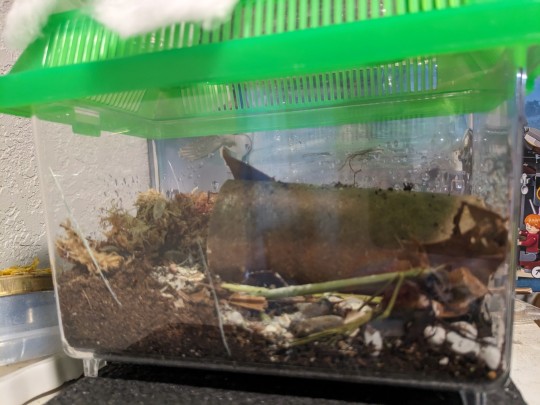

This is their little enclosure! I have some cotton on the top to help with humidity, dust, and escapees
They are porcellio scaber orange dalmatians and will eventually be moved into a terrarium of mine once the colony is bigger.
What is inside the closure:
- toilet paper tube
- dead tree and fern leaves
- potting soil
- spangum moss
- a dried daisy stalk (please tell me if this is not ok!!)
- a feeding powder (bought it from the same place I got these little guys has some pea powder eggshells and other stuff)
- tiny bit of charcoal
- tiny bit of sand and pebbles
- hay
- guinea pig droppings
- Betta food (because I have a betta fish and it was easy to just drop some of her pellets in there, I also have shrimp food for cherry shrimp if anyone thinks that would be a good addition)
- while they have not arrived yet I also have some springtails on the way as well to help with cleanup :)
As I said this is my first time ever doing this and I'm open to any advice!!
#isopod#porcellio scaber#orange dalmatian#orange dalmatian porcellio scaber#isopods#isopod care#terrarium#terrarium bugs#catis#2024
2 notes
·
View notes
Text
@tolkien-feels asked It's me again! I'm hoping to re-read CoH soon-ish so I've been thinking about it a lot and I was wondering... Using your amazing environmental knowledge, could you guess at all what the Gaurwaith eat to survive during that one horrible winter before Beleg shows up?
Flora, fauna, geography and environment of Arda masterlist
Disclaimer: I used both what we can extrapolate based on descriptions of the landscape and climate as well as my own headcanons and inspirations and reference books on similar habitats as well as books like The Atlas of Middle Earth and The Flora of Middle Earth
Ok so disclaimer aside!
As always please feel free to ask more or request more detail in any area or anything!
The Gaurwaith live mainly South of Brethil with Amon Rûdh being their base of operations after Beleg arrives.
Brethil is a deciduous forest of mostly birch trees and it can likely be inferred that the area around it is also of a temperate climate with cold winters with potential for heavy snowfall
The area that they live in is described at least a few times as “the woods of Teglin” with Teglin being the tributary to Sirion that borders Brethil on its South side. Christopher Tolkien’s map of Beleriand also shows a forested area South of Brethil though not extending to Amon Rûdh and the Talath Dirnen. The map of the Narn also shows this.
The diet of the Gaurwaith was probably fairly rudimentary and consisted of meat, mostly root vegetables but others as well, occasional fruit, and combinations of ingredients like stews. During calmer times, wild herbs can be used to season food.
Deer (red and roe deer most likely), rabbit and game birds like pheasants and quail would probably be fairly easy to get for talented hunters and the former two could potentially last some time and the more skilled among them could make use of the skin and bones as well.
Where salt or other supplies to store and keep the food is a different question of course.
Wild carrot, common bistort, wild parsnip, garlic mustard, wild chives, cattails in swampier areas
Prior to Túrin’s arrival it likely involved more stolen goods
Blaeberry or European blueberry and lingonberry are both associated with birch forests as are scaber stalk mushrooms and Cantharellus cibarius, a species of golden chanterelle mushroom however both risk confusion with similar looking but inedible mushrooms.
Wild strawberries, black currents, and crab apples also fit the climate.
If any are talented enough to fish, river trout and other abundant freshwater fish might be an option too
Chestnuts and hazelnuts (we see a mention of hazel thickets) could also likely be gathered and stored though.
I hope this is ok! let me know if you have any more requests or questions!
#the children of húrin#the silmarillion#Túrin#gaurwaith#brethil#musing and meta#the children of húrin
19 notes
·
View notes
Text
I'm just gonna start being a mycologist now.

Leccinum Aurantiacum ~ "Red-Capped Scanner Stalk" or "Birch Bolete" or "scaber stalk"
Edibility: Good edible mushroom. Best when dried first to break down toxins and apparently to improve flavour, but sufficient cooking will also break down toxins. Insufficient cooking will lead to very bad tummy times such as vomiting and the shits.
Ecology: I found this in a mixed forest of birch and coniferous trees, grows connected to the roots of birch trees in symbiosis.
Distinguishing Features and Look-alikes: red, brownish, or orange cap that has a velvety texture when young and a smoother texture as it ages. The cap becomes slimey when wet. Cap is 5 cm to 15 cm diameter, stalk is up to 20 cm long, white with distinctive black markings called "scabers" that I think look like barcodes or TV static. Underside of cap is NOT gilled but instead has white/cream coloured porous flesh.
No lookalikes other than other boletes, some may be toxic. just pay attention to the distinguishing features and never eat a mushroom you havent fully 100% identified. Consult an expert or a guide !!
0 notes
Photo
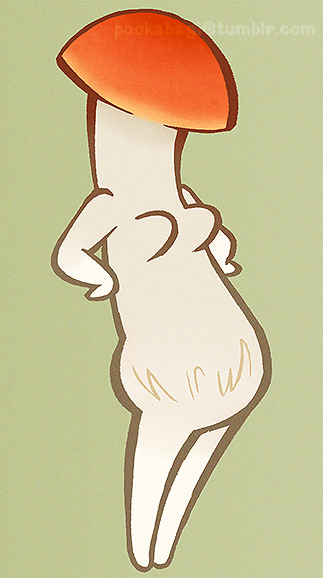
day 4: sexy scaber stalk
13 notes
·
View notes
Photo

1 note
·
View note
Photo
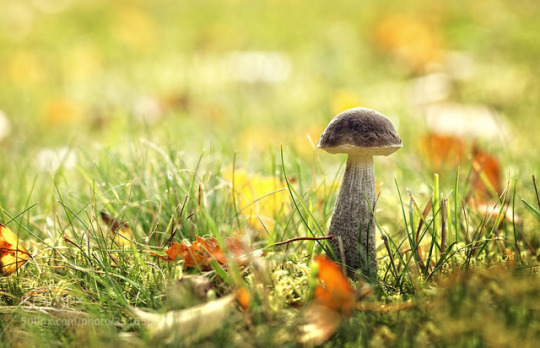
Rough-stemmed bolete........ by PauleKlein
1 note
·
View note
Photo

a 1964 USSR stamp depicting red-capped scaber stalk mushrooms
[id: a postage stamp with a detailed illustration of a cluster of mushrooms with red caps and white stalks with brown speckles. attached to the stamp is a label with a less detailed, monochrome illustration of similar looking mushrooms. end id]
#ephemera#snail mail#postal#postage#stamps#ussr#soviet#soviet union#mushrooms#fungi#mycology#image description#described#mod fave
615 notes
·
View notes
Photo


Grevillea x ‘Audrey’
This is the Grevillea hybrid ‘Audrey’, growing in our south side flower garden. I am training it up as a multi-stem “standard” to leave an open area beneath for perennials. Yes...I know that is a “busy” photo, but look for the upward arching stems of very narrow, pointy foliage, which looks a bit like Rosemary. (on the left is a Jasminum nudiflorum trained onto a trellis) The multiple bunches of flowers are gorgeous - dominated by shiny red-orange, with orange-peach throats. This is it’s first major bloom, and the plant has increased in size 10-fold this year!
Why ‘Audrey’? This hybrid between the Australian natives Grevillea juniperina and Grevillea victoriae has an extremely long bloom cycle. It is the only one of 5 different types of Grevillea in our garden and our neighbor’s that is in bloom in August! And, it is very popular with our Anna and Rufous hummingbirds. [For which I am relieved, since I had to whack back the Chilean Glorybower Vine (Eccremocarpus scaber) whose red/yellow flower are a major food source]. The foliage texture of ‘Audrey’ is very different - much more narrow and pointy, and darker green, than the G. victoriae hybrids and cultivars and G. miquelena that I planted in our neighbor’s garden. Oh...and we also have a long-time friend named Audrey. So, it just seemed appropriate.
This plant was purchased as a rooted cutting in a 4″ pot in Fall 2018, at The Desert Northwest Nursery run by Ian Barclay in Sequim, WA, on the NE corner of the Olympic Peninsula. This area is in the rain shadow of the Olympics and gets maybe 1/3 the rainfall we do here in Kingston only 40 miles away. Lavender grows extremely well in Sequim, and there are so many farms that a Lavender Festival is held most years - alas not 2020 and 2021 due to COVID19.
Ian strongly recommended ‘Audrey’, and was intrigued about my idea to grow it as a standard. He felt that would work. However, it will take some serious training for several more years. My efforts this year have been to train one stalk as the main trunk with several uprights at narrow angles, all tied up to a 6′ rod of rebar! You see, this plant really wants to be a sprawling, fountaining bush. Well that will be fine, if I can get the canopy up high enough to allow other plants to grow underneath. Then the weeping branches will be lovely. This is only the 3rd growing season for ‘Audrey’, which was only a couple of foot tall stems in both 2019 and 2020. As, I said, exponential growth this year.
It took quite a bit of research today to determine the origins of G. ‘Audrey’. Ian Barclay had the most info, but I was able to find a few scraps of additional information. Ian was able to identify this cultivar with assistance from Grevillea authority Peter Olde. Apparently ‘Audrey’ was masquerading as another cultivar, but did not match that cultivar’s description in Australian sources. The Royal Botanical Garden of Victoria, in Melbourne, Australia, reports that this hybrid, G. juniperina × G. victoriae, was raised by George Althofer at Nindethana Nursery, Dripstone, New South Wales, in 1957, the name commemorating his wife.
The Australian National Botanical Gardens’ Horiticultural History garden provides some perspective: Nindethana Nursery was a significant step in the history of Australian native plants in Australia's horticultural industry. The Nindethana dream eventually became Burrendong Arboretum. So, Grevillea ‘Audrey’ was the product of pioneering native plants nursery, founded by George Althover...and his wife Audrey - you know she was a huge source of support for the success of such an enterprise! How awesome to have a plant named for a native plants pioneer. And, such beautiful flowers on a beautiful plant.
Alas, Ian reports: In Australia, it seems to have fallen out of favor as a "junk plant" compared to other Grevilleas. Go figure. Indeed! Here it is awesome!
Many thanks to Ian Barclay, and The Desert Northwest Nursery. BTW - Ian has an excellent illustrated article on Grevilleas adaptable to the Pacific Northwest, at THE DESERT NORTHWEST - Pacific Northwest Grevilleas Revisited
Paul Bonine of Xera Plants, in Portland, Oregon, also has an excellent article on Grevilleas published in Pacific Horticulture magazine: Pacific Horticulture | Grevilleas for the Maritime Pacific Northwest
#grevillea audrey#grevilleas for the pacific northwest#orange-flowered shrubs#low-water shrubs#hummingbird plants#grevillea juniperina#grevillea victoriae
2 notes
·
View notes
Photo

Rough-stemmed bolete........ by PauleKlein
0 notes
Photo

#mushrooms#fungi#mycology#mushroom photography#forestcore#forest floor#edible mushrooms#bolete#leccinum scabrum#Brown Birch Scaber Stalk#nature#nature photography#original photographers#photographers on tumblr
304 notes
·
View notes
Photo
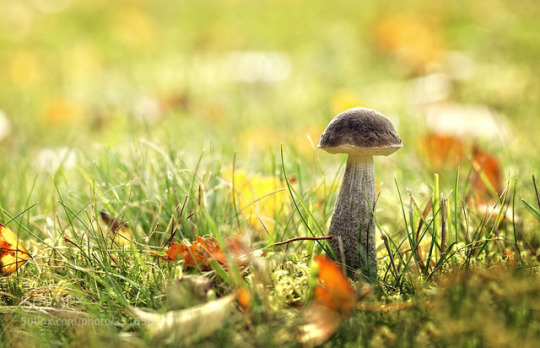
Rough-stemmed bolete........ Leccinum scabrum
#autumn#frog#europe#leaf#grass#wood#asia#ground#wet#mushroom#grassland#scaber stalk#birch bolete#ligh
0 notes
Text
River Otters And Late Summer Flowers: A Wonderful Wildlife Encounter And September Beauty At The Susquehanna Wetlands
River Otters And Late Summer Flowers: A Wonderful Wildlife Encounter And September Beauty At The Susquehanna Wetlands
It was a good week in my search for wild edible mushrooms. I found many edible species during the week, including the “redtop” (aspen scaber stalk bolete) and “cozie” birch scaber stalk bolete needed for our traditional Polish mushroom soup we serve at Holy Supper on Christmas Eve. So I decided to take a morning off from my mushroom hunts and visit the Susquehanna Wetlands in Salem Township…

View On WordPress
0 notes
Photo

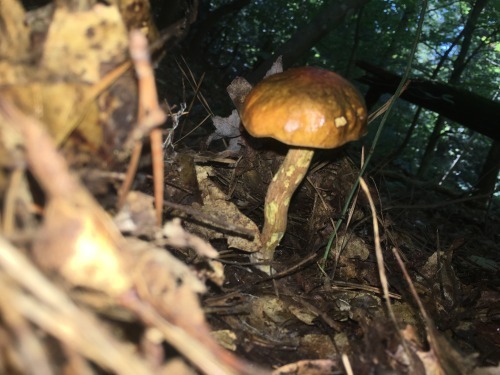

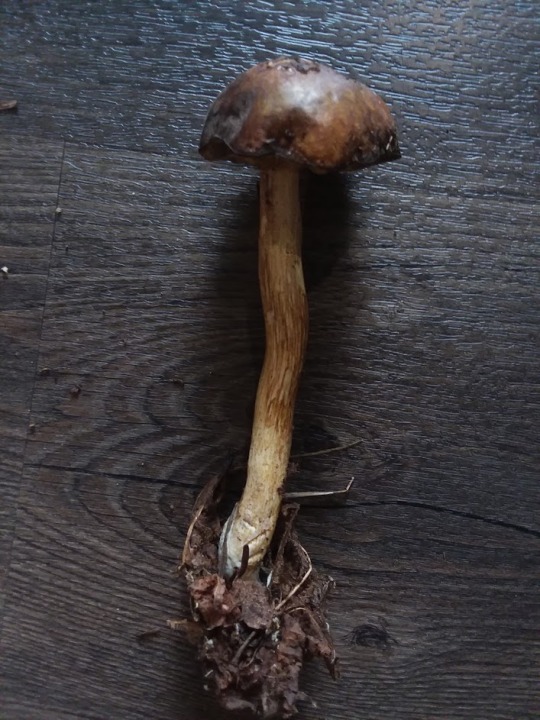

Leccinum longicurvipes -- “Scaber stalks”
I think this is an incredibly cool mushroom, I remember carrying it around for hours when we first found it. This mushroom was originally detailed in the Great Smoky Mountains National Park, not quite so far from where we found it in the Daniel Boone National Forest. These are mycorrhizal mushrooms that like to share their space particularly with oaks.
When you first see this mushroom, the first thing you are going to notice is its bright orange color, and how incredibly shiny it is. This little guy seemed to already be on his way out when we found him but you can still tell on the top how vibrant his colors are.
If you’re working on an identification for a mushroom such as this, your trip might take you to the boletes and have you backtracking, such as myself! They have many of the same features - pores on the undersides of the caps, scabers, and caps that easily discolor when bruised. The main difference between leccinum and boletus is really a genetic one (of which I really do not get the way scientists decide how taxonomy is decided). You may also hear this mushroom referred to as Boletus viscidocorrugis.
Besides the vibrant, shiny, orange colors, this guy might have had, the texture of the cap was super distinct and worth noting. It was not only waxy, but sticky as well. On the underside, their pores are normally a little yellow and bruise easily (which you can see in the last picture where we had poked it to purposely make it bruise). The stem will be 4-10 centimetres long and very thin; the cap will be between 2-5 centimetres across.
Could you eat this mushroom? Theoretically, yes! People love eating leccinum fungi, however, there have been many cases of poisonings related to these mushrooms over the years so be aware of what you are getting into and do thorough research beforehand.
Have fun!
0 notes




